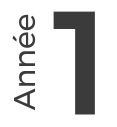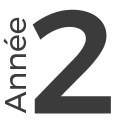Immerse yourself in the complex world of adolescence, discover how client identification is crucial in therapeutic work and explore the various relational models to support young people and their families.


ONLINE OPEN HOUSE
ONLINE OPEN HOUSE
December 10, 2024
from 6:30 p.m. to 8:30 p.m.
MEET US
Come and discover our training courses in strategic systemic approach, hypnosis and systemic coaching. You will meet the trainers and be able to talk with them!
Therapeutic intervention with young people and parents constitutes a real complex and stimulating challenge. Indeed, adolescence, a period of opportunities but also of vulnerabilities, can lead to risky behavior and psychological disorders. This fragility has been exacerbated by the Covid-19 pandemic, revealing psychological suffering among certain young people. In this unique context, it is noted that a lot of suffering is linked to relational problems: relationships with others, with oneself, with the world.
My experience in supporting adolescents reveals a major complexity: adolescents are not always the direct clients, but often the carriers of the symptoms. The essential question then arises of the choice of the intervention framework in the face of these specific situations.
Understanding the complex world of adolescence, a period of profound individual and family upheaval, allows us to shed light on interactions within families and their impact on the development of young people by considering different family models.
Understanding who the client is and creating a strong therapeutic alliance allows for more tailored intervention. The relationship of trust between the therapist, the adolescent and the family is fundamental.
Adolescence a key moment in life
The adolescent and his family: an interactional perspective
If the entire existence is a succession of identity crises and intimate metamorphoses, the moment of adolescence is undoubtedly the most acute. It supports the young person's quest for differentiation and autonomy in relation to their parents and, above all, the search for meaning and value in their life. Adolescence therefore represents a period of major transition in the life of an individual and their family, marked by profound physical, emotional, cognitive and social changes. In therapeutic work within a PAEJ , it is essential to take these particularities into account to offer adapted support to young people and families.
Adolescence: individual and family upheaval, a key moment in life
As part of my work, I support young people aged 11 to 25, which corresponds to what we today call adolescence. This term appeared in the vocabulary of our Western societies in the middle of the 19th century; these definition criteria have varied throughout history. Today, it encompasses a phase of physical and mental development that extends from puberty to adulthood. Biologically, the World Health Organization defines adolescents as young people aged 10 to 19, “they experience rapid physical growth and cognitive and psychological development. This impacts how they feel and how they think, make decisions, and interact with the world around them. » (World Health Organization: WHO, 2019).
But according to other scientists this transitional period could last up to 25 years, where we rather speak of “young adults”.
The various changes during adolescence can therefore accentuate pre-existing problems or reveal new ones, as they navigate between their own aspirations and family and social expectations.
The relationship of self to self
From a biological point of view, humans go through a period of physical and psychological upheaval between the ages of 12 and 19. The adolescent will question his image, seek to find his new place in the world (Nardone et al, 2018, p. 32).
This therefore forces him to question his sense of himself, his identity (Gammer, 1992). These changes are considered to be part of the whole range of changes that adolescents face and can influence and result in repercussions on their perception of themselves.
As part of my work at PAEJ, I regularly notice that these transformations of the body can cause discomfort. Mundane difficulties such as fixations on a part of the body may appear. The body becomes the expression of a search for identity or control of one's image, via clothing, hairstyle, tattoo or even piercing.
Young girls, more than boys, bear the brunt of the aesthetic standard.
This discomfort can become more painful and dangerous. Risky behavior, eating disorders , addictions are signs of deeper unhappiness. It is expressed more “silently” in girls (eating disorders, scarification, suicide attempts) than in boys. More “expressive”, boys take refuge in violence, delinquency, alcohol, drug addiction, etc. The affirmation of identity is often encouraged and valued by the group. But in the majority of cases, these experiments will ultimately only be a rite of passage.
Marie-Christine Cabié explains , there exist, in traditional societies, symbolic rituals which provide the support of the entire community for this thorny transition. However, in Western or contemporary society, there is no help of this type. It all falls on the family who is poorly prepared for this new journey. (Gammer, 1992)
During this transition phase, adolescents are also often taken on an emotional roller coaster. Researchers at Harvard and Washington University found that adolescents tend to experience multiple emotions at the same time and have difficulty differentiating and therefore regulating them. Adolescence is, therefore, a period during which the emotions felt are much more confused. (Nook et al., 2018).
Emotions are at the heart of humanity and take an important place in the systemic and strategic approach , because they are what guide our actions. Their excesses are at the root of many personal but also relational problems. This is why, as a relationship practitioner, their manifestations constitute a fundamental axis of intervention with this public. They thus provide us with information on what we should confront or avoid, to help resolve the problem.
Thus, just like behaviors and the cognitions with which they are inevitably entangled, emotions are an essential component of the interactions we have with ourselves and with the world. It is therefore important to understand their multi-systemic implications in order to develop an appropriate posture and intervention.
With the young people I support, I like to remind them that there are no negative emotions and that each of them has a function, but also a message to convey to us, by whispering or screaming . It is therefore important to take care of it, to welcome it, to normalize it! So I use this phrase quite regularly: “ you surely have good reasons to feel what you feel ”. These words defuse any apprehension about talking about it; feeling heard and understood, the young person will then be able to talk about it more easily.
Self-relationship with others
Carole Gammer and Marie-Christine Cabié highlight the complexity of relationships at this stage of life. Adolescence represents a test for all members of the family. Adolescents question family values and face multiple emotions and challenges. All of these changes invade the family sphere, causing conflicts of loyalty and requiring the negotiation and acceptance of new bonds and boundaries.
It can be a stage passed through more easily and be a source of learning for some families, while for others, it can become a real challenge with crises and conflicts. In these situations, external help becomes essential for the adolescent and his family. (Gammer, 1992).
Brief Strategic Systemic Therapy (BSS) allowed me to adopt an innovative approach to better understand and manage interactions between parents and adolescents. As it focuses on finding entry points and levers for intervention, it allowed me to work preferentially with parents on interactions with their children, especially if the latter are adolescents, intrinsically mobilized in opposition and resistance.
Furthermore, the peer group becomes a main social reference and a privileged sphere allowing the young person to broaden and differentiate the modes of socialization and individuation. Thus, during this period of transition, peer relationships, whether close or more group-based, contribute positively or negatively to the adolescent's psychosocial development and undoubtedly play a crucial role in the development of identity (Erikson et al ,1972).
One of the primary interests of the group is to respond to the need to belong; it is within the group of peers that the young person will develop himself. The importance of others' views during adolescence pushes young people to follow suit, to do like the others or to stand out depending on their personalities. Thus, within the group it belongs to, norms, rituals and its own language can be constructed and shared.
It is important to join the young person in their vision of the world, to speak their language and to show a real interest in what they are passionate about in order to build a relationship of trust essential for support.
Relationship of self to the world
Adolescence is a phase of questioning beliefs and values acquired during childhood. Young people explore different perspectives to define their personal beliefs and their place in the world. This period is characterized by intellectual curiosity and an open-mindedness towards new ideas and experiences.
Main types of relational organizations between parents and adolescents
Within each family, a specific communicative and relational style is established between parents and children, which shapes family interactions. Research by G. Nardone, E. Giannotti, and R. Rocchi (2001) identified six family patterns that are not necessarily problematic, but can become problematic when interactions become rigid and dysfunctional, jeopardizing well-being. family.
Contemporary society influences families, transforming them according to its trends.
Overprotective model
In current Latin societies, the overprotection model is the most common. Adults make life easier for young people to avoid difficulties. Communication is gentle and warm, as for the relationship, it is always complementary with parents in one-up (high position) and children in one-down (low position).
Unfortunately, this overprotection can lead to the emergence of fragile children, unable to take responsibility and face life's challenges, because they have not been gradually prepared to do so.
Democratic-permissive model
This family model is characterized by the absence of authority and hierarchy. Decisions are made collectively and family relationships are based on dialogue. However, managing children's daily behavior can become complex in the absence of strict rules and sanctions. These difficulties can develop into psychological disorders such as obsessions or eating disorders.
Altruistic model
This model is characterized by parents who constantly sacrifice themselves for others, their relationship with children is based on excessive altruism, relationships are often asymmetrical. This can create young people with excessive expectations, asking for constant help from their parents and causing bitterness among the latter in the face of the imbalance between giving and receiving. This atmosphere can generate anxiety, sometimes pushing the adolescent to try to escape the house.
Random pattern
In this intermittent model, parents alternate between different parenting styles, which creates confusion for children. This instability makes lasting problem solving difficult, as educational interventions lose their effectiveness. This model is common in a constantly evolving society, where the latest popular strategies seem to be favored. With the media constantly releasing new solutions, it is easy to doubt your choices and actions.
Delegate model
Here, parents delegate their role to other external figures and therefore are not considered as points of reference by their children. This results in difficulties for adults who do not adopt a united front and who do not apply similar educational methods.
Authoritarian model
In this model, parents exercise their power decisively and rigidly and establish themselves in a position of superiority. In cases of rebellion, conflicts can be violent and in reaction to this environment children will seek to experience things in secret, move away from family values and seek autonomy in order to leave home as soon as possible. Although this style prevailed 30 to 40 years ago, it still persists in some families today.
These different family dynamics have a significant impact on the adolescent, who seeks to forge an identity, develop his autonomy and position himself in the world. They can influence their quest for independence as well as their psychological well-being.
By taking into account the specificities of each model and their implications on family dynamics, this allows me to facilitate the awareness of parents and adolescents, thus promoting more balanced and harmonious family relationships while supporting the healthy development of young people. this crucial stage of their lives. Having these family models in mind allows me to understand what is happening today and best help young people and their families to escape from sometimes inextricable situations.
I share the observations of G. Nardone and his team on the growing number of hyper-protective families who represent the current trend of parents who come to seek help from PAEJ.
Client identification in therapeutic work
During these 3 years of training, one of the great discoveries for me and one of the most useful in my daily life was the notion of customer identification. Indeed, asking the initial question of whether the young person is in the position of patient/client, complainant or tourist is one of the key elements in proposing a personalized and adapted intervention. (Aim, 2015)
Who is the applicant?
In our therapeutic work, we first meet the initial client, that is, the person with whom we interact directly. Then, according to the different "positions" described in the reference work entitled "Tactics of Change", we distinguish two categories: "clients" and "non-clients", among which is the "tourist", who is a patient under constraint, and the “restrictive patient”, who seeks to impose his conditions.
This classification was later simplified by Steve de Shazer, founder of Solution-Oriented Brief Therapy. He thus distinguished the client from the “visitor” (who consults for reasons other than change) and the “complainant” (who mainly expresses his difficulties without necessarily seeking a change), (Vitry, nd).
Thus, in the United States, in order not to pathologize, we prefer to use the terms “clients”,
“complainants” or “visitors” to describe the attitudes of individuals in therapy.
The TBSS has clearly opted to work with “The one who complains” and not with “The one we complain about”, so we will not necessarily meet the person who has the symptom.
The customer
The term “client” refers to the person who feels discomfort in their current situation and wants change (there may be several in a system). He can be considered part of the relevant system because he is actively engaged in solving the problem and is willing to collaborate with the therapist. It is essential to note that the customer is not necessarily the carrier of the symptom, but he represents the main lever of change in the strategic approach.
The complainant
He expresses suffering and complains about the situation, but may be resistant to the idea of changing or fully engaging in the therapeutic process. The complaint is frequently vague, its expression takes the form of generalization or sensation: "my problem is that I don't have confidence in myself, I can't stand my parents anymore." These generalizations most often come in the form of explanations or speculation about the causes of the problem. The complaint can also be vague when the person shows an inability to express it. (De Scorraille et al, 2017).
And “although there cannot be a request for help without a complaint, this is not automatically a request” (De Scorraille et al., 2017). The worker must then determine whether the customer is an actor in the system or only a distributor of complaints. (Vitry, nd).
The patient in the position of tourist has the following characteristics: he has no demands, he is there at the request of another and does not subscribe to this request (Aïm, 2015). I frequently encounter this type of patient among the young people I support. They come to see me mainly under duress or coercion from another person, often parents or even national education staff. A certain number of examples are quite classic and help illustrate this type of patient, in particular: “ I don't care, I have nothing to say, it was my mother who told me to come and see you ".
Thus, to determine the patient's position, it is necessary, from the first meeting, to evaluate the vision of the person consulting regarding their problem.
The tourist will say that he does not have any, the complainant will like to be listened to and will give responsibility for his problem outside of himself and the customer will take ownership of his problem and implement the necessary actions for there to be change. Therefore, identifying the position of the person consulting determines the direction of the intervention. The role of the therapist will be to lead a tourist to become a complainant and finally a client.
The relevant system
The relationship clinician defines his intervention system following an interactional approach to the problem that he will establish based on the complaint and the symptoms that he collects. Its first action will consist of contextualizing the complaint in a dynamic and operational form made possible by systemic and interactional reading: who does what? whose ? When ? where?, with what effects? on which ? and why is this a problem? If the problematic situation involves several people, the relationship clinician will favor in his intervention system those who recognize that they have a problem and who are then the most able to participate in a process of change: those who suffer the most from the problem; those who are particularly affected by the problem or those who have made several unsuccessful attempts to resolve the problem. (De Scorraille et al. (2017))
The identification of this system allows the worker to target his intervention on the individuals who are most active in their solution attempts. Rather than working with everyone in the group, the focus is on those who are truly motivated to make changes. Understanding who to mobilize in the intervention allows us to propose more adapted and effective solutions to resolve the problems.
In connection with the notions of client, complainant and tourist, the concept of “relevant system” in therapeutic intervention therefore takes into account the different attitudes and motivations of the people involved in a problematic situation.
Training in brief systemic and strategic therapy
LACT offers several live certified web training courses with 50 international trainers:
- Generalist systemic training
- DU relationship clinic with the University of Paris 8
- Clinical Master of Giorgio Nardone LACT/CTS
- Systemic Coach Training
I want to consult
To find out the prices, select the training that interests you
MAPPING OF ALL LACT TRAINING COURSES
AND STRATEGIC APPROACH
Prerequisites
_
general
Bachelor's degree
with or without
clinical experience
clinical
Bac +3
with
clinical experience
Bac +5
with
clinical practice
education
Bachelor's degree
with or without
teaching experience
Bac +3
with
teaching experience
BUSINESS
Bachelor's degree
with or without
coaching experience

LACT
CERTIFICATE -
FOUNDATIONS LEVEL
UNIVERSITY
DIPLOMA -
RELATIONSHIP
CLINIC AND
STRATEGIC
INTERVENTION -
with
Paris 8 University
DIPLOMA
-
MASTER
®
IN
STRATEGIC SYSTEMIC
LACT
CERTIFICATE –
EDUCATION
FUNDAMENTALS LEVEL
UNIVERSITY
DIPLOMA -
STRATEGIC
SYSTEMS APPROACH TO
EDUCATION
-
with
Paris 8 University
LACT
CERTIFICATE -
SYTEMIC
COACHING
FUNDAMENTALS LEVEL

LACT CERTIFICATE - PRACTICAL LEVEL
COACH
DIPLOMA ®

SYSTEMICIAN ® - RELATIONSHIP CLINICIAN ® DIPLOMA - ADVANCED LEVEL
CLINICAL MASTER®![]()
DIPLOMA MASTER HYPNOSIS
AND STRATEGIC APPROACH

general
Bachelor's degree
with or without
clinical experience
clinical
Bac +3
with
clinical experience
Bac +5
with
clinical practice
LACT
CERTIFICATE -
FOUNDATIONS LEVEL
UNIVERSITY DIPLOMA
RELATIONSHIP
CLINIC AND
STRATEGIC INTERVENTION
with Paris 8 University
MASTERS
®
DIPLOMA IN
STRATEGIC SYSTEMIC
BUSINESS
Bachelor's degree
with or without
coaching experience
education
Bachelor's degree
with or without
teaching experience
Bac +3
with
teaching experience
LACT
CERTIFICATE -
SYTEMIC
COACHING
FUNDAMENTALS LEVEL
LACT
CERTIFICATE –
EDUCATION
FUNDAMENTALS LEVEL
UNIVERSITY
DIPLOMA –
STRATEGIC
SYSTEMS APPROACH TO
EDUCATION
with Paris 8 University

PRACTICAL LEVEL CERTIFICATE
DIPLOMA
®

SYSTEMICIAN ® - RELATIONSHIP CLINICIAN ® DIPLOMA - ADVANCED LEVEL

CLINICAL MASTER®![]()
DIPLOMA MASTER HYPNOSIS
Resources on responding to adolescent challenges with the systemic approach
- Current perspectives on adolescence. Psychic and social issues - Cairn.info ( https://www.cairn.info )
- Systemic approach to adolescence - University of Lausanne ( https://serval.unil.ch )
- Systemic approach to rumors in adolescence - ScienceDirect ( https://www.sciencedirect.com )
- A systemic approach in the psychotherapy of adolescent patients - ScienceDirect ( https://www.sciencedirect.com )
- Schooling of students with difficulties - JSTOR ( https://www.jstor.org )
- Adolescent psychology - Dunod ( https://www.dunod.com )
- Systemic and family approach - Childhood and Family Center ( https://www.centre-enfance-et-famille.ch )
- ADOLESCENCE-FOCUSED APPROACHES TO VIOLENCE PREVENTION - UNTF ( https://untf.unwomen.org )
- Children/Adolescents - Episode 3 - Building a secure attachment from childhood to adolescence - Podtail ( https://www.podtail.com )
- What Edgar Morin's complex thinking brings to education - The Conversation ( https://theconversation.com )
- Systemic Family Therapy and EMDR Therapy - ScienceDirect ( https://www.sciencedirect.com )
- Challenges and specificities of the care of children and adolescents - WHO ( https://platform.who.int )
- The assessment of the family context in the psychological examination of the child - ScienceDirect ( https://www.sciencedirect.com )
- Children/Adolescents - Episode 10 - ADHD: Symptoms, diagnoses and treatments - Podtail ( https://www.podtail.com )
- Borderline personality disorder in adolescence - Cairn.info ( https://www.cairn.info )
- Systemic therapy for adolescents: a guide - Center for Psychotherapy ( https://www.centredepsychotherapie.fr )
- Systemic approach for crisis management in adolescence - Psychomedia ( https://www.psychomedia.qc.ca )
- The parent-adolescent relationship in a systemic perspective - Portail Santé ( https://www.portailsante.fr )
- The systemic approach in family therapy - ScienceDirect ( https://www.sciencedirect.com )
- Adolescence and systemic therapy: challenges and strategies - Mental Health ( https://www.santementale.fr )
- The impact of family dynamics on adolescents - Cairn.info ( https://www.cairn.info )
- Using the systemic approach to respond to the challenges of adolescence - Psychologies ( https://www.psychologies.com )
- The challenges of adolescence and systemic therapy - Journal of Psychology ( https://www.journaldepsychologie.fr )
- Understanding adolescents using the systemic approach - Santé Magazine ( https://www.santemagazine.fr )
- The systemic approach to supporting families of adolescents - Revue de Psychiatrie ( https://www.revue-psychiatrie.fr )
- The advantages of the systemic approach for adolescents - French Therapy Association ( https://www.aft-therapie.fr )
- Brief systemic therapy for adolescents in difficulty - Academy of Therapy ( https://www.academiedetherapie.fr )
- Responding to adolescent risk behaviors with the systemic approach - Center of Psychiatry ( https://www.centredpsychiatrie.fr )
- Systemic interventions for adolescents - Portail de la Santé ( https://www.portaildelasante.fr )





